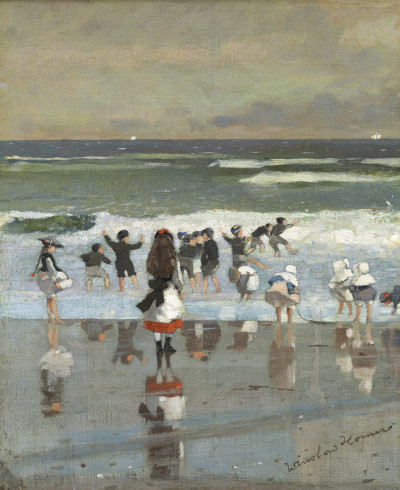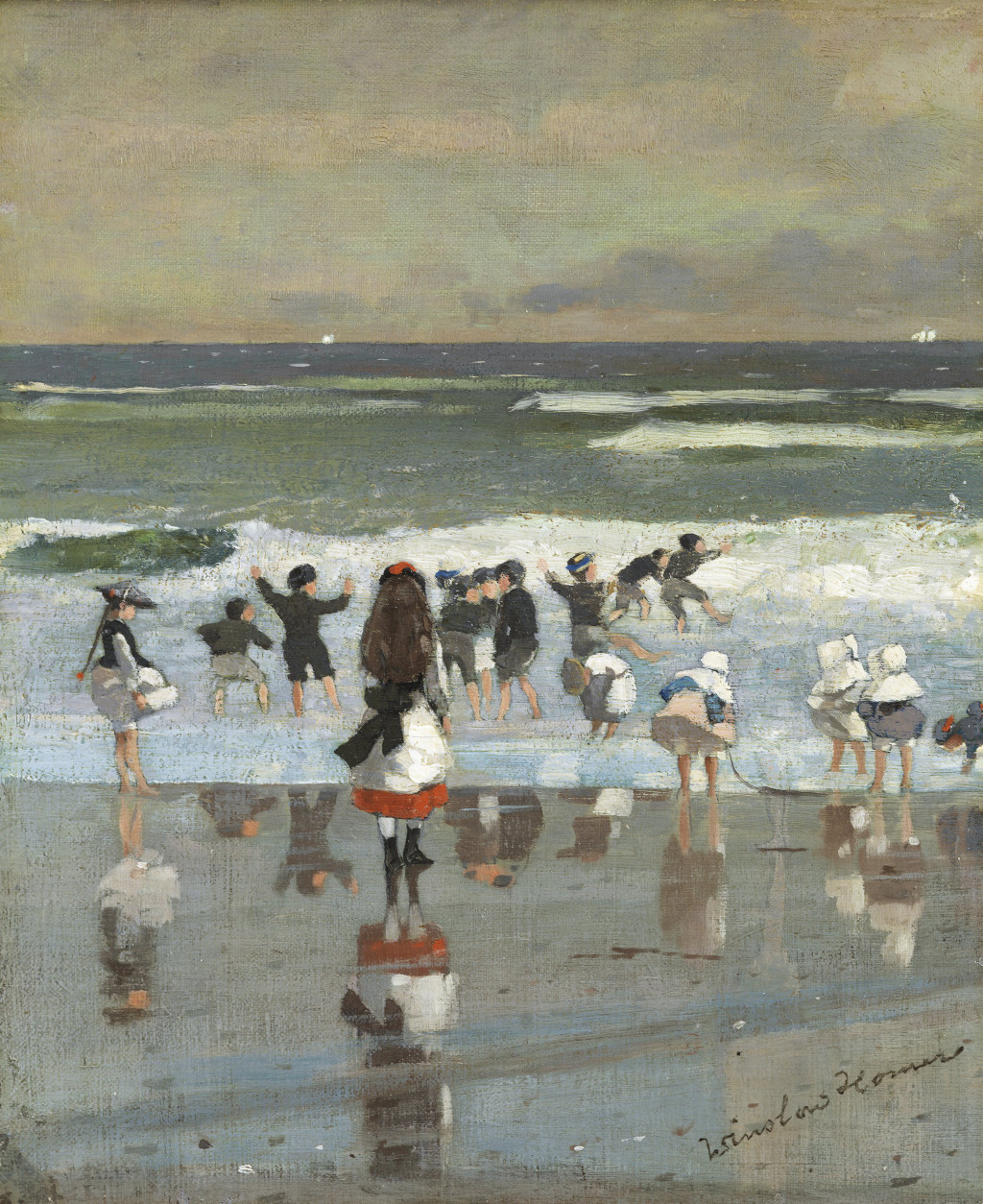This delightful beach scene captures two key elements from Winslow Homer's artistic style. There is the seascape content for which we are so familiar, but also an abundance of fun and activity, with children playing in the foreground.
The artist liked to cover the leisure time of the upper classes within his work, particularly in the earlier part of his career. In this composition we find a large group jumping in and out of the water, not allowing themselves to go in too far. Homer captures the simplicity of a beautiful life within scenes such as this, and within today's modern world images such as this hold a great charm for many. Notice how Homer leaves out his dramatic, aggressive waves from titles such as Breezing Up (A Fair Wind), The Life Line and The Fog Warning, and instead focuses on a calmer environment in which these children can play without danger. The content also allows Homer to include various types of fashion from the period, adding to the historical nature of this piece. Without these clothing styles, it could easily be from the modern day, as children continue to enjoy a day at the beach today in just the same way as a century ago. We find different ages of children shown here, with younger girls wearing little white hats. An older child looks over them, whilst boys bravely sneak further in, with their short trousers just about remaining dry.
Something unusual about this piece is the aspect ratio of the painting - where Homer chooses to produce a seascape which is tall and narrow. Typically, he would follow the landscape dimensions, with a wide stretch of canvas but chooses the portrait format for this piece. This decision leaves plenty of spare space above and below the young children. It also forces them close to the sides of the painting. It may have been a conscious choice to try out something a little different and the painting itself is still delivered beautifully. He would create other beach scenes within his career, some of which were in watercolours. The painting itself is listed as being sized at 29.3cm in height, by 24cm in width. The piece is dated at 1869, by which time Winslow Homer would have been approaching his mid-thirties but still very much learning his trade as he moved into oil painting later than one might have expected - previously he worked as an illustrator and only transitioned into oils, then watercolours, as his curiosity started to lead him in new directions.
Beach Scene from 1869 is currently on display at the Museo Nacional Thyssen-Bornemisza, as part of a long term loan from its private owner. Research by historians has suggested that beach scenes such as this were relatively rare up to this point, and that Homer was one of the first to include these regularly within his career. One can also remember the contributions of Joaquin Sorolla, a Spanish Impressionist who gave us breathtaking artworks along this theme, such as Women Walking on the Beach, After Bathing and Valencia Beach in the Morning Light. Eugène Boudin in France would also do similar. Some have argued that Winslow Homer heads towards the methods of the Impressionists within this artwork, though he would never actually meet any of them in person. There is almost an abstract nature to this piece, too, in how he constructs the scene from three main bands which cut horizontally across the painting. He was able to combine traditional content and moods whilst working in a style which was also fairly contemporary for the period. This painting's inclusion at the Museo Nacional Thyssen-Bornemisza makes it a relatively rare piece from Homer that is displayed outside of his native US, though they do also have a number of other items from his career.





